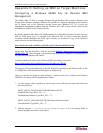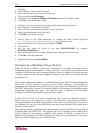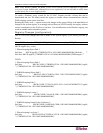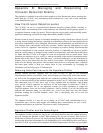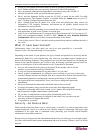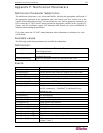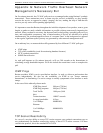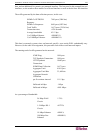
140 COMMANDCENTER NOC ADMINISTRATOR GUIDE
CK-ACK three-way handshake, which when completed, indicates that the port is listening and
accepting connections. This handshake is a pre-cursor to any TCP session and is also embedded
within most other synthetic transactions, including HTTP, which we'll discuss later.
In the case of this node:
TCP SYN issued: 74 bytes (592 bits)
TCP SYN/ACK response: 74 bytes (592 bits)
TCP ACK response: 66 bytes (528 bits)
Total Traffic: 524 bytes (1712 bits)
.000219 seconds
Transaction Time: 524 bytes (1712 bits)
Average bandwidth: .000000571%
% of 10Mbps Ethernet: .0000000571%
% of 100Mbps Ethernet:
HTTP Synthetic Transaction
This test of HTTP service availability includes the TCP session setup, as described above, a web
page request, typically a HTTP re-direct in response, a downloaded page, and a session close.
Due to the nature of the protocol, this carries significantly more overhead than other, more simple
tests, but it also proves conclusively that the server is responding and is capable of serving web
pages.
In this case:
TCP Setup (from 524 bytes (1712 bits)
above):
HTTP GET Request: 84 bytes ( 672 bits)
HTTP Response and 1054 bytes (8432
page: bits)
Session Close: 198 bytes (1584 bits)
Total Traffic: 1860 bytes (14880
Transaction time: .11 seconds
Average bandwidth: 49.6 bps
% of 10Mbps Ethernet: .00000496%
% of 100Mbps .000000496%
Ethernet:
SNMP Data Collection
The collection of performance metrics from SNMP agents happens independently of SNMP
availability testing, which by default, is OFF. When an agent is discovered, a suite of
performance metrics specific to that device type is collected from the agent every five minutes.
Because the type of data and number of data points collected varies by host type, the following
describes a "typical" host, specifically, a Linux host from which we collect ten metrics for the



